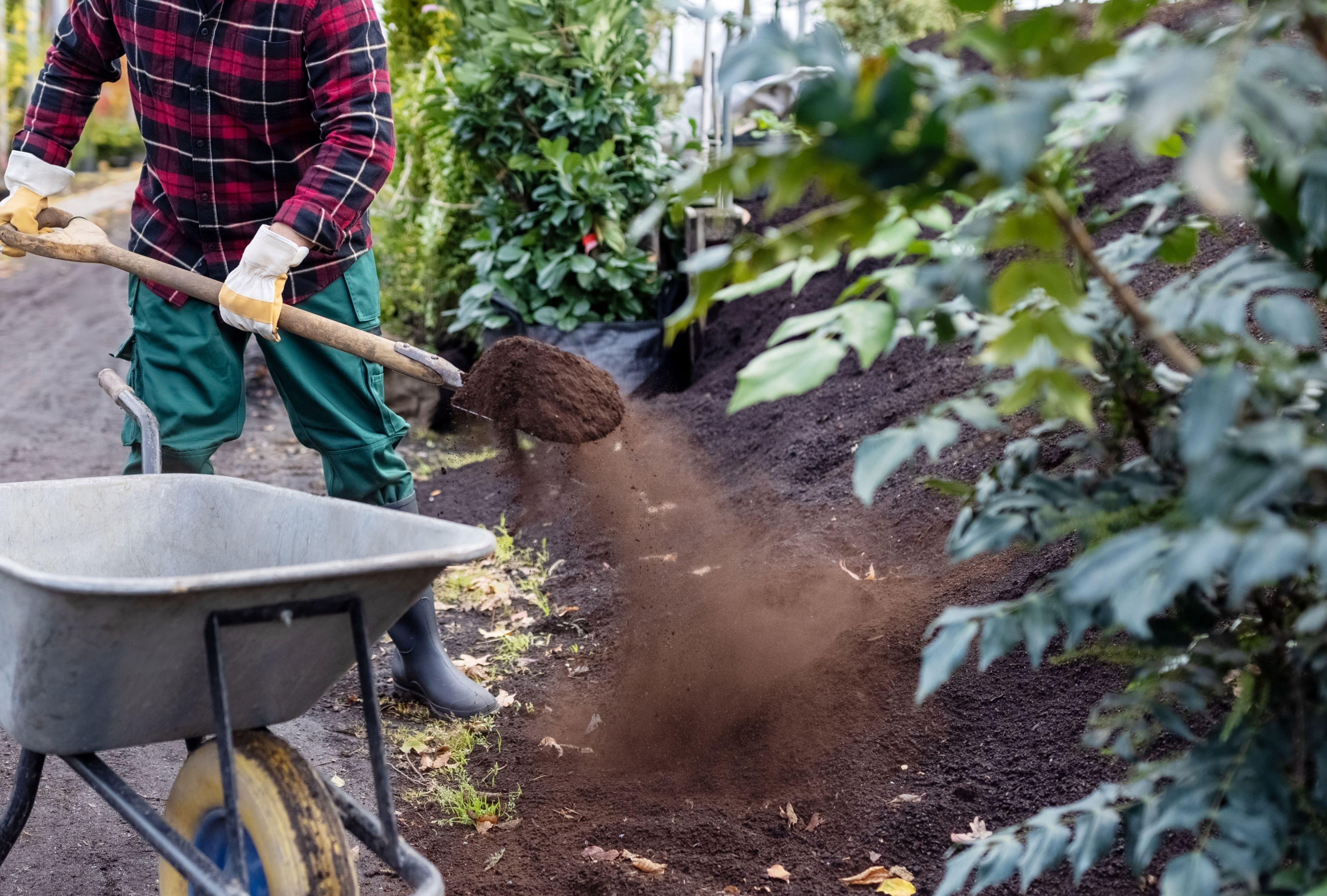As the busy garden season wraps up, there's one last—but very important—task to tend to: Feeding your soil. Amending beds with organic material will help build nutrient-rich soil over winter, which is vital to healthy plants.
Before grabbing a host of amendments at the nursery, however, do a soil test through your local extension service to see what your garden actually needs. From there, you'll typically add minerals, compost, and mulch. Here, garden expert Barbara Damrosch explains each of the components needed to create a thriving garden come spring.
Barbara Damrosch is the owner of Four Seasons Farm and the author of several seminal books on gardening.
1. Sprinkle in Minerals
Don't just toss in minerals at random, says Damrosch—only use when recommended by your soil test to correct deficiencies that have been identified. Some of the most common minerals include:
- Azomite: This mineral made of compacted ash "acts like a multivitamin for depleted soils," says Damrosch, as it contains a variety of elements.
- Blood meal: Helps correct low nitrogen levels in soil.
- Bone meal: Boosts phosphorus and calcium.
- Granite dust: Adds potassium and other elements.
- Gypsum: An alternative to lime to add calcium to soil.
- Lime: Often recommended for acidic soil, this raises the pH and adds calcium.
- Phosphate rock: Slowly releases phosphorous into soil.
- Sulfur: Slowly brings down the pH level of soil; always look for elemental sulfur, which doesn't contain insecticides like some other sulfur products do.
- Wood ash: Contains a host of minerals, including potassium, phosphorus, boron, and more.
2. Layer on Compost
What Damrosch calls the "gold standard of soil amendments," compost can be store-bought or homemade. Either way, spread an inch or two of it across the top of your garden beds. It helps soil hold onto moisture, adds nutrients, and supports helpful organisms in the soil.
There are a variety of ways to compost at home, but all methods require the following components:
Greens: These are moist elements that are high in nitrogen. Common greens include kitchen scraps, fresh garden clippings, and coffee grounds. Avoid cooked foods, pet waste, and dairy products.
Browns: These dry elements lend carbon to the pile. They include things like newspaper, straw, and fallen leaves.
Related
3. Finish with Mulch
The last layer you need to add is a couple inches of mulch, which suppresses weeds, insulates, and helps soil hold onto moisture. It's best to use natural materials like the following:
- Shredded leaves: Fallen leaves from your yard's deciduous trees often provide some of the best mulch for your garden—and they're free. Just shred before adding to your bed.
- Straw: Damrosch points out that "Baled straw is good for mulching, but chopped straw is easier to handle, stays put, and is heat-sterilized to eliminate weed seeds."
- Wood: Wood mulch like shredded bark, twigs, or branches less than 3 inches in diameter is especially nutritious, says Damrosch.
4. Let Nature Do the Work
After you've amended soil, "put your shovel away," says Damrosch. "Over winter, soil-dwellers like worms and beetles incorporate the amendments into the soil, where an army of microbes transforms them into plant food." By the time spring arrives, those nutrients will be ready to boost your plants into a new growing season.



